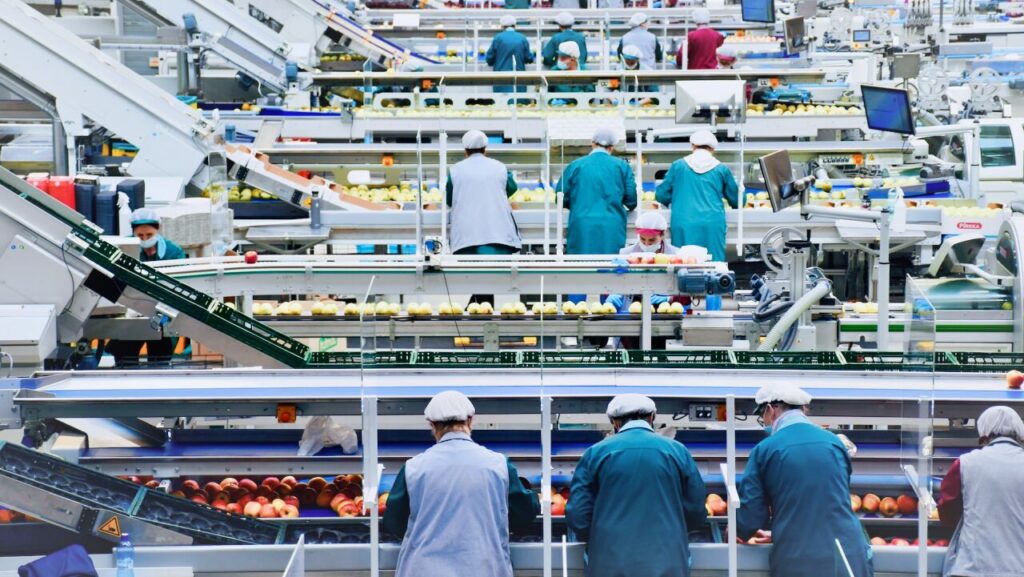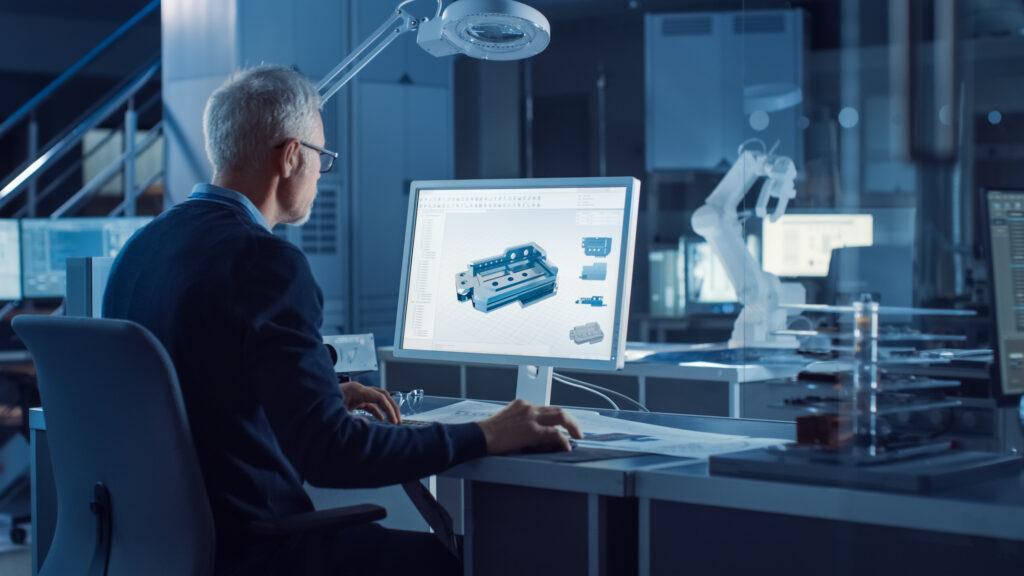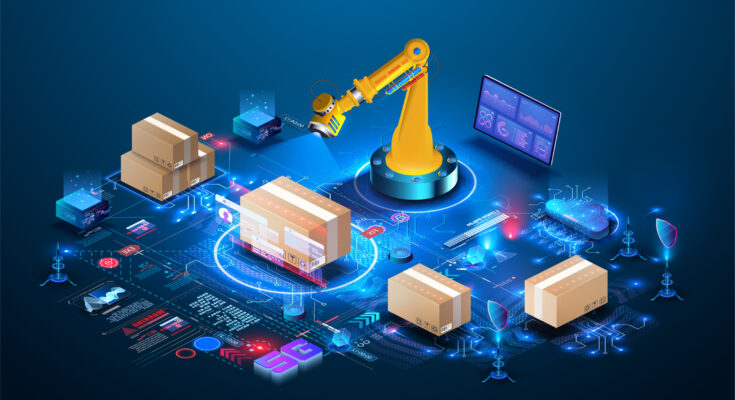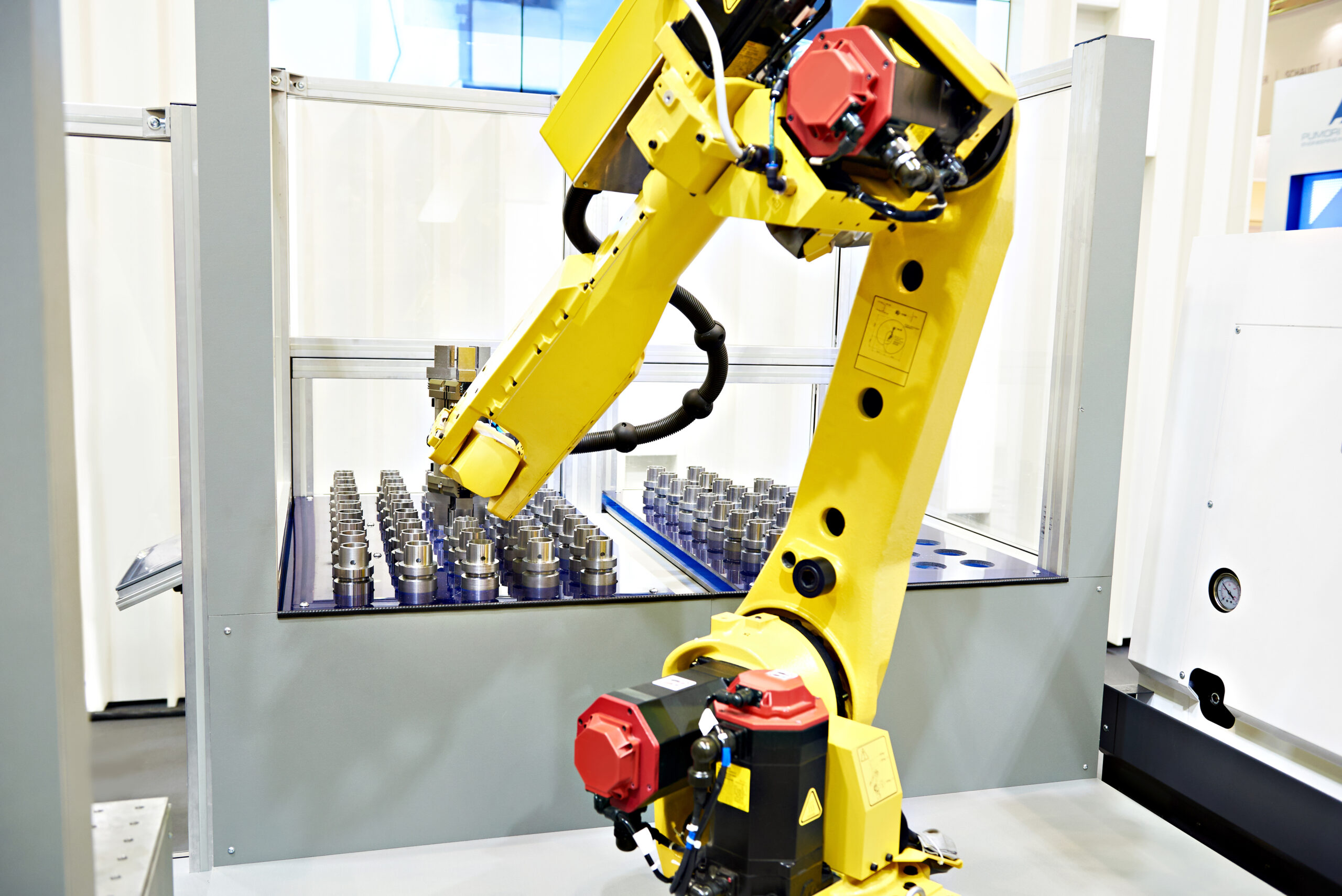Are you looking for ways to improve your production process? Whether you are looking to optimize your workflow, automate bottleneck tasks, or prioritize continuous improvement, RoboDK can help.
Simulation and offline programming are valuable tools for improving production processes with robots. They help you solve the problems that can occur when adding automation in a simple, powerful, and efficient way. RoboDK offers a range of benefits that can help you automate with ease.
Let’s explore 9 tried and tested ways you can improve your production process with RoboDK.
1. Automate the Bottleneck Task with RoboDK
A bottleneck task is the one task that uses the most time or resources in your process. It holds up the rest of production and stops you from scaling your operations to meet higher demand.
A powerful way to use robots is to automate your bottleneck task.
By automating, you can add both extra throughput and consistency to the bottleneck task. The right type of robot can improve your throughput immensely, helping you to remove that difficult bottleneck. You can test the impact of this by simulating the task in RoboDK.

2. Free Up Personnel by Automating Boring Tasks
What if you can’t automate the bottleneck task in your business?
Sometimes, a task requires a human touch and can’t be automated. If such a task is causing a bottleneck in your workflow, you might not be able to solve it with a robot.
But there is still a solution. There are probably several boring, repetitive tasks that take time from your workers. Here, you can automate those tasks to free up personnel for the bottleneck task.
3. Incorporate Robot Thinking into Product Development
Adding a robot can also affect production in less obvious ways. For example, your product development process can improve immensely by considering the constraints added by a robot.
Robots require their tasks to be regular and consistent. Often, this means you need to adapt your processes to make them easier to achieve with robotic automation. This robot thinking can help make your process more robust and efficient, even before you consider the productivity of the robot itself.
RoboDK is an ideal tool for testing designs and processes during this product development step. You can test your ideas in the simulator and optimize them before putting them into production.
4. Eliminate Waste and Optimize Cycle Time With RoboDK
Waste is a key factor when you want to improve your production processes. By eliminating waste, you increase productive time and improve efficiency.
With robots, the most common source of waste is unnecessarily long cycle times. When the robot moves more than is necessary or handles material too much, you are wasting valuable time and effort.
RoboDK offers several features for improving cycle times. These include cycle time analysis, intelligent motion planning algorithm, and CAD tool integration.

5. Analyze and Optimize Workflows in the Simulator
Analysis is a key step when you are working to improve your production processes. It allows you to see and understand what is happening in your process, helping you identify opportunities for improvement.
The challenge is that, in the physical world, it’s hard to accurately measure the performance of individual steps in your production process. Real-world data can be messy and many factors influence performance.
Robot simulation provides a valuable tool for analyzing your automated process in depth. You can simulate the effect of changing different variables, helping you to optimize your automated workflows.
6. Train Workers to Use Robots for Continuous Improvement
People are the most important factor in production. When you have knowledgeable, trained, and experienced workers, they can help to improve production continuously.
Most people still have little experience with robots, which can make it hard for them to know how to contribute to automated process improvement.
RoboDK offers a range of free and paid training resources for those looking to improve their robotics knowledge. They teach you how to use robots effectively and spot potential areas for improvement.

7. Test New Machine Purchases Using Simulation
We all know that buying new machinery can be expensive and time-consuming. You don’t want to invest in a robotic system only to find that it doesn’t work for your specific task or requirements.
With RoboDK’s simulator, you can quickly and easily test many different robots for your task before you make a purchase. This reduces the risk of investing in robots and will help to speed up the deployment process.
8. Create Standard Components for Copy-Paste Robot Cells
A significant benefit of offline programming — i.e. programming the robot in a simulator — is the ability to create standardized templates and program modules you can easily reuse between robot projects.
This also means that you can create “copy-paste” robot cells. Once you have successfully deployed one robot to a task, you can create an exact replica of this robot using the same programming template. In this way, you can easily scale your robotic capabilities.
9. Develop a Culture of Robotic Automation
While you could use RoboDK for just one robot deployment, the real power of using robots is when you develop a “culture of robotic automation.”
By making robots an integral part of your workflow, you can continue to save time and budget for years to come. With RoboDK’s offline programming and simulation features, you can easily test new ideas for robotic automation and quickly deploy those ideas once you have optimized the programs.
There are so many ways that RoboDK can help you improve your production process. So get started today!
How could robot offline programming and simulation improve your production process? Tell us in the comments below or join the discussion on LinkedIn, Twitter, Facebook, Instagram, or in the RoboDK Forum. Also, check out our extensive video collection and subscribe to the RoboDK YouTube Channel




